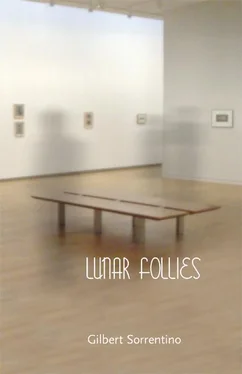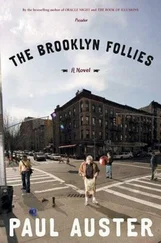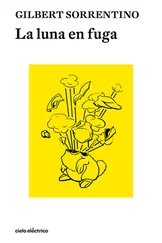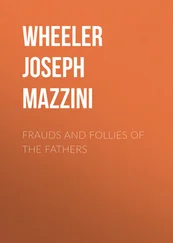In letters of purest jade: MY LINGERIE IS WORTH MORE THAN YOUR CAR; of shocking pink neon: WOMAN, WOOGIE OR BOOGIE?; of rarest lapis lazuli: ART IS GOOD BUSINESS; of pale bauxite: THERE ARE NO MASTERPIECES; of matte beryllium: I SMELL LIKE A DOITY SKOIT; of Hungarian chalcedony: BIG LOFTS ARE BIG FUN; of scarlet aluminum: DON’T CELEBRATE YESTERDAY; of rhinestone bakelite: CHE BABA CHE BABA CHE BABA; of salsified pearlite: FUCK EL GRECO; of lodestone ebony: MEN ARE PISSERS. Barbrah Joliot-Curie’s conflicting and intrusive MESSAGES, all of which tend toward the metaphysical noise that may be termed the emblematic substitute for what was once mistakenly valorized as a value-based system of so-called “high art,” implicate and suggest a complex, actually, of shifting signs, arranged so as to transgressively subvert modes of corporate anti-colonialist, pre-magicorealist inscription. This gesture is never enough to make one embrace the rebarbative, as Benjamin implies, and rush, metaphorically, to Dom’s Heroes for one of his famous “hoagies,” and yet it is almost enough. In point of fact, Dom’s Extra-Special Hoagie may be culturally indexed as an authentic work of petit-bourgeois, working-class art, and, as such, asserts itself as a proletarian icon whose task it is to displace the various capitalist icons of nonrepresentational complicity. “Hoagies, A Meal in Itself,” as Dom’s shrewdly hand-lettered sign states — the grammatical paradigm carefully distorted so as to render the normative plural singular — boldly insists on the labile, collapsing the symbolic into nothing more than an aporia. And the naïve injunction, EAT MY SANDWICHES, IT’S DELICIOUS! in glossy black on white cardboard, becomes, then, a radically salutary act of cultural infringement.
A cluster (bunch) of disparate items (things) some of them words, and nothing else but words, HUDDLE(S) in the corner LIKE smokers outside a building. So crack (expert) JOURNALISTS often (more times than you can shake a stick at) WRITE. The things (items) pretend to be art, but they are, essentially, a bunch (cluster) of shit (crap). “We’ll see about that!” one thing (smoker) notes, apparently from among (amid) the disparate items (buildings), for all (everybody else) to see.
Jules Verne, Les aventures du Capitaine Maison, 1864
A staggered pile, something like a perverted, tortured ziggurat in shape, of fawn-colored bricks, many bricks, much too many to be counted, sprawls across the floor of the Kansas Jura Gallery. The whole is transgressive of something, even subversive, but of what? The piece might be a static representation of an early Stones tune married, gloriously, with a “drone-and-squeal” sound project by the Lombardo Collaborative. The bricks, in their essential posture of gestural, defiant decrepitude, manifest a core transgressive spirit (if “spirit” is not too grandiose a word, and if Jamón is to be given any credence, it is not), one that is rigorously detached from the paradigmatic pieties of the fading Zeitgeist and the late phallo-millennium. The occasional fly that settles on the bricks serves to recall their primary significatory duties, as if these everyday objets are, indeed, no more than horseshit, even though that may be their nominative potential, rather than their constative one. In any event, as signifiers, they gesture toward the salutary emptiness that one discovers in the spaces of a poem by Mallarmé, and never in the words themselves. It is, then, Mallarmé to whom we must turn in order to permit this haunting, oddly rhomboidal construct to assert its cone-like, cubist, empty qualities, qualities which are, at once, always terrible, absent, yet eerily sublime, and, perhaps most movingly, qualities that insist on the absence that is within the implied absence of the brick pile itself. The sun which slants in through the quite perfectly grimy skylight touches the work with the poignancy of nature forgotten if not nature betrayed, nature ignored if not nature assaulted. The silent and somehow disheveled construct seems to emerge, at such times, from the very earth itself, and its stillness is that of the greatest, or, at least, the pleasantly mediocre, works of art.
Film Loop
A man talks to a woman who turns out to be his wife, since she has always been his wife, although, at present, she is slightly different, or perhaps it is that she was slightly different in the past. She is wearing the grey, fitted suit that he has always liked, black patent leather pumps, and sheer, off-black nylon stockings. The drinks at the bar, for they are in a dim and quiet cocktail lounge, which await the man and his beautifully dressed wife, for she is, he admits, his wife, are on a tray, and yet no waiter is present; for that matter, no barman is in sight. Charles seems to be his name, or so he said. The drinks are four — two in champagne flutes and two in cocktail glasses. Those in the champagne flutes are of the palest steel blue, a blue so utterly pale that it verges on the colorless; it is the color which gave to gin the beautiful name, blue ruin. Those drinks in the cocktail glasses are cerulean blue, the blue of Apollinaire’s fake Texas skies. He calmly says, “Blue ruin is a beautiful name,” and looks down at the cocktail lounge from a stingily appointed office, one of whose walls is glass from floor to ceiling. It is through this glass wall that he looks to see his wife, now sitting at a different table, and dressed in a navy blue suit, her legs crossed so that her thighs are discreetly yet provocatively exposed. “Your skirt,” he says to her, but she cannot hear him, of course. Who is the relentless person behind him, who is talking, talking, talking to him as he tries to think of a way back to the cocktail lounge, to the woman who is his wife, to the glamorous and unearthly drinks, to his youth and her young womanhood? To scotch and the clean whiteness of their belated wedding day, lovely and dreamily out of focus? Who, for Christ’s sake, is this mother fucking bastard? Some homeless lout who should have died in the gutter yesterday? The man who speaks gibberish from out of the moon? Some kind of mastermind?
What, precisely, was it about Claude Langrenus, often called the King of Transgression, the Broom King, the Emperor of Mustard, Royal Claudie, and, most usually, simply the King, that prompted so many distinguished photographers of the San Francisco Bay Area to take, conservatively speaking, thousands upon thousands of photographs of Kingorooney, as he was known to many, photographs of him in the performance of everyday tasks, tasks that one might think too trivial to occupy, even for a moment, the King of Ideas and Theatre, as he was occasionally dubbed? The “scholarship of the image,” to which we owe so much, has collectively determined that there are presumed to be, roughly, some 43,976 images of Lord Faucet, as he was known to close friends, and, remarkably, that those images represent the King of Canned Tomatoes, as that legendary figure was called by the beloved street urchins of San Francisco, city of fogs and food, of hills and highways, of crystal air and cable cars, of art, art, and ever more art; and that the “tomato monarch” may well be Langrenus himself, shown in a number of mundane activities and things that appeal to the sophisticated citizens of” Kansas on the Bay,” as The City is known to its oldest residents, some of whom were last seen in Noe Valley looking for signs of life on the quiet streets. Langrenus, or the King of Tomatoes, or “Larry,” is seen admiring an organ grinder’s monkey, and, in a few cases, an organ grinder; running in terror from a bear who is attacking a youthful companion; laughingly strapping on a “lady’s helper”; being cheated by a three-card monte dealer while he smirks the smirk of chumps everywhere; fleeing in panic from a Pekingese who is chewing on an old woman’s knee; buying a deluxe edition of Théâtre Epinal by “Chet”; pissing up a rope. Just who was Claude Langrenus? Prize-winning chemist, multimillionaire inventor, hack novelist, wretched playwright, furniture designer, fashion plate, and much-loved lecturer on the horror of phallocentrism in the rest room, yes, yet happy to be thought of as, simply, King Corn Flakes. These remarkable photographs, a mere sampling of the rich treasures stored in the vaults of the California Palace of the Legion of Honor Annex, will not tell us. Sadly, the King of Oxycetabutylinase, as he was teasingly called by the hobos, rakes, and ladies of the evening of Russian Hill, remains a mystery to all — still another mystery shrouded in the fogs and mists of the brooding Bay Area that many call home!
Читать дальше












